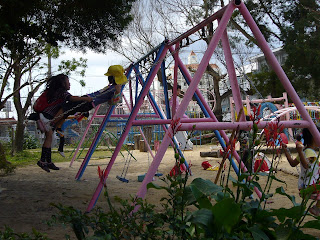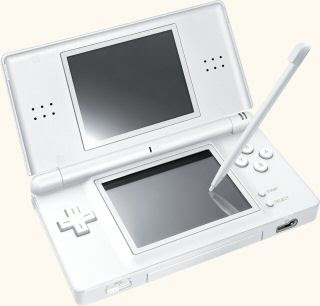Summary: I am still not sure about myself as a designer in the context of having gone through all of vital ideation’s lenses, because feel like I still haven’t tapped into a lot of the value of this course. So, I’m going to keep taking it, on my own. :)
Vital Ideation has not really felt like a course to me until this point. The course itself was a Spring 2008 course organized by Olin students, and the was the idea of viewing the world through different "lenses" to influence design. The reason I signed up for the course in the first place was largely instinctive. I was a part of the early meetings when students talked about their ideas for “student-led courses” when vital ideation came up as an idea, but the impulse for actually taking the class was twofold. The first thing to note was that I often told myself: “I would probably love that class,” or even “I’m going to end up taking that class, as busy as I may be.” The second thing of note was other people, who, especially later on would tell me “You know you’ll love this class” or “You know you’re going to take this class.” Well, I signed up, and I am very glad I did.
Now the semester is over, I’m supposed to be done, but I’m not. In fact I’m sitting in the middle of a lounge in the middle of the night trying to synthesize this course, trying to find what personal value is buried for me, and I can’t really find it. I can’t for the life of me think about how this course has made me truly different, in a truly factual and accurate way. That is not to say that I don’t think I’ve learned much from the course, but I feel like its true value is still not known to me. I really do think that vital ideation isn’t over for me at all. The semester has ended, yes, but the class is definitely not over. In fact, the class feels like it is ready to begin, as corny as that may sound. I feel very strongly that vital ideation for me has been nothing more than a springboard for something of personal value that I can’t discern yet. I’ve spent something around 50 hours this semester, with and without others thinking, reading, writing, but mostly talking about a lot of different topics. It is easy to say that the course was about a variety of design lens, and that the end result is a dozen students who are now more aware about their ability to apply lenses to design, but that’s not so true for me.
In the end, I didn’t spend too much time this semester brainstorming and ideating around specific topics like designing for fun, or ecomimicry, or anything remotely close to designing for the next guy. All those were topics for vital ideation, but none of these things hold any real value to me as design lenses. I actually felt like all of our talks were simply an opportunity to engage in discussion with other students and faculty about a variety of topics, and much of the value for me was found in generating the (few) blog posts I did, reading other’s posts, and spending hours on the web finding what other people have written about similarly to myself and others. More value was found in our evening discussions, how they came up in different forms later, how they added to reflection from the UOCD course, and how all of it together made me somehow a bit different. Right now I don’t feel closure when it comes to this class at all. I’ve written about the things I feel strongly about, and started writing about the things I didn’t really care about so much, and then stopped. The most interesting thing for me about this class is how well it has connected with other things, and it is these examples I would like to reflect a bit more on.
First of all, I kept a notebook for a week or two, then spent hours writing about how much carrying design notebooks was a silly fad, and then stopped keeping the notebook. It wasn’t really intentional in that my notebook was buried under a pile of books and left there, but I certainly didn’t care enough anymore to look for it. It is interesting to see how the notebook changed for me, not physically as in what I wrote in it. Rather, it is my interaction with this notebook that changed for me. At first keeping a notebook was a “man, I should do that” sort of thing, but it soon turned into a “well, I’m doing it now, right?” sort of thing, where I couldn’t really seem to sync myself to having and carrying a notebook. It felt so artificial to me, that I stopped writing notes in it, except for very sparingly. I stopped “ideating” with it altogether very quickly and then turned it into a personal notes book for tasks, work, and any other thoughts that I might multitask by writing during a boring French class or ten. Eventually, as I mentioned already I left the notebook behind, and I’m glad I did. I found that pretending to keep an up to date record of my thought processes was not realistic. I have learned this semester that I think mostly out loud. I tend to talk a lot, and most of it is on the fly, not really knowing what comes five words later. Sometimes the most insightful things I feel I say I don’t actually understand until 5 minutes after I’ve said it. The result of this is that I wouldn’t record things accurately in a notebook, since I felt like I was recording meaningless things. Also, much of my thought process is dependent on clearing my mind and just thinking about something, which didn’t match up too well with recording my every thought on paper for a course, or even for myself.
The second point of connection that this course has had for me also syncs up nicely with another one of my blog posts, which originally was written halfway through the semester. I was a part of a one-credit education research project this semester which involved going on a trip to a high school in rhode island called the MET. We spent a lot of time reading and talking about the school, as well as an entire day at the school and many meetings afterwards to debrief on our experience. This course is also something I think hasn’t really gotten the closure I normally feel when a class ends. There is a lot more about this MET school trip and experience left uncovered. My second blog post was about connecting social networking elements with education and the school environment, something that was a very easy connection to make having seen students interact with both during school, even myself. I won’t get into the specifics here, because I want to reflect at a bit of a higher level than this, but overall I found multiple areas of this notion of connecting social networking and pedagogy that paralleled my experience at Olin, the MET, high school, elementary school, as well as through my siblings and others in general. In fact, I hope to ask a handful of students to actually read my blog post, because I know it will spark a discussion that will be infinitely more useful and valuable to me than that blog post was, even though I felt like I did get a lot out of the thought that went into that post.
Another point of connection for me was actually the art and engineering discussion that we had over the course of the semester. I was never able to put this talk and discussions we had about the talk into a blog post however. I always felt like I hadn’t really thought about anything interesting enough to connect to outside of what I had written about for one of my UOCD design reflections, which was as all about how design is a very akin to art. I spent a lot of time talking to my team about UOCD and how it was presented to others in our class. Without a doubt UOCD is one of the most polarizing courses at Olin as far as student reactions and feedback for the course. I personally loved the class, but I am still quite confused about how students seem to feel that the course should have been much more structured and deterministic. It seems like telling students that UOCD was an art class might have made it a lot more digestible as a course for a lot of people. I could try to explain my thought process here a bit more, but I’ll jump to another topic now.
There really is only one thing left for me to say about this course. I’ve decided that I’ve written about everything that I felt I really connected with well this semester. The only exception to this was the design for fun module, which I read other people’s posts for. I’m aware that the course description says that we needed something like 8 blog posts, but I think I’m going to stop at my four right now. (My first post was meant for both sticky ideas and notebooks, hence the length.) I’d much rather spend another 15 hours reading other people’s posts and hoping they spark future interesting discussions that write about topics I currently feel I have nothing new to say. So, after finishing this blog post I think I’ll be spending a couple hours over the course of the next week continuing to take Vital Ideation, but for myself, not really for credit. In the end it doesn’t really matter if I get credit.
Summary: I am still not sure about myself as a designer in the context of having gone through all of vital ideation’s lenses, because feel like I still haven’t tapped into a lot of the value of this course. So, I’m going to keep taking it, on my own. :)


















